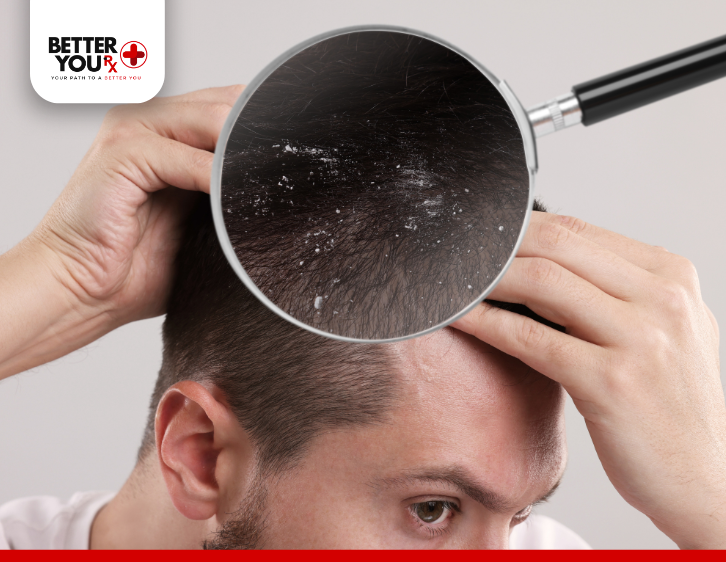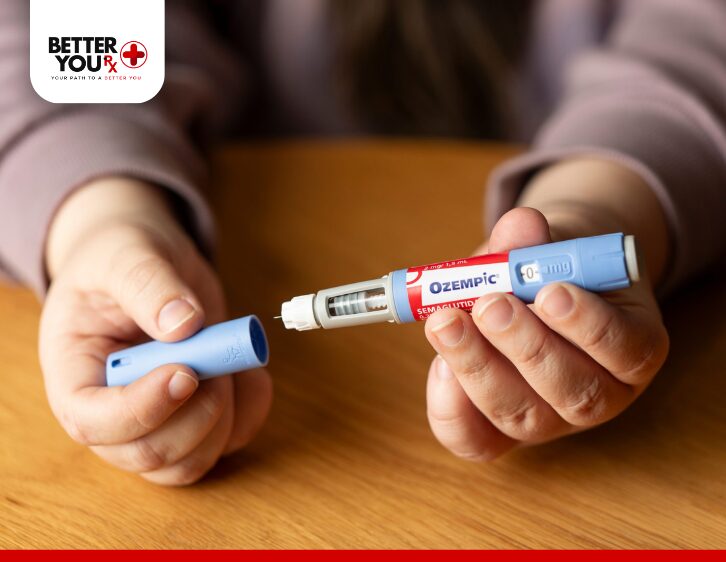How to Treat Fungal Infection in Scalp: Effective Solutions for Relief
Have you ever experienced an itchy scalp, persistent flaking, or unusual hair loss? These symptoms can be frustrating and embarrassing, often signaling a fungal infection on the scalp. Fungal infections can affect anyone, regardless of age or skin type, leading to discomfort and potential complications if left untreated. In this guide, we will explore how to effectively treat a fungal infection in the scalp, including preventive measures, recommended treatments, and the benefits of using Clonate Scalp Lotion, a reliable solution available through Better You Rx.
Understanding Fungal Infections of the Scalp

Fungal infections of the scalp, often referred to as tinea capitis, are caused by various types of fungi, including dermatophytes. These infections thrive in warm, moist environments and can be transmitted through direct contact with an infected person or object, such as combs, hats, or bedding.
Common symptoms of fungal infections on the scalp include:
- Itching and irritation: The initial signs often include intense itching, which can lead to discomfort and scratching.
- Redness and inflammation: Infected areas may appear red and swollen, causing further irritation.
- Flaking and scaling: The scalp may develop scaly patches or flakes, resembling dandruff.
- Hair loss: In more severe cases, fungal infections can cause temporary hair loss in affected areas.
Diagnosing a Fungal Infection
Before starting any treatment, it’s crucial to confirm that a fungal infection is the underlying cause of your symptoms. A healthcare professional can diagnose the condition through:
- Physical examination: A thorough examination of your scalp can help identify visible signs of infection.
- KOH (Potassium Hydroxide) test: A sample of scalp debris may be taken to determine the presence of fungal elements under a microscope.
- Culture tests: In some cases, a sample may be sent to a lab for further analysis, allowing for a more accurate diagnosis and treatment plan.
Effective Treatment Options for Fungal Infections

Treating a fungal infection on the scalp typically involves a combination of topical treatments, antifungal medications, and home care practices. Here are some effective strategies to help combat the infection:
1. Topical Antifungal Treatments
Using antifungal creams, shampoos, or lotions can directly address the fungal infection. Look for products containing active ingredients such as:
- Ketoconazole: A broad-spectrum antifungal that can help eliminate various fungal strains.
- Clotrimazole: Another effective antifungal that can treat scalp infections.
- Miconazole: Known for its effectiveness against dermatophytes, this ingredient is often found in over-the-counter treatments.
Clonate Scalp Lotion from Better You Rx is an excellent option for those seeking an effective treatment for fungal infections. This lotion is specially formulated to penetrate the scalp and target the infection at its source. The key benefits of Clonate Scalp Lotion include:
- Fast-acting relief: Provides quick relief from itching and irritation associated with fungal infections.
- Effective formulation: Contains potent antifungal ingredients that help eliminate the infection.
- Easy application: The lotion is easy to apply, ensuring targeted treatment for affected areas.
2. Oral Antifungal Medications
In cases of severe infections or when topical treatments are ineffective, your healthcare provider may prescribe oral antifungal medications. These medications work from the inside out to eliminate the fungus. Commonly prescribed oral antifungals include:
- Griseofulvin: Often used for more extensive infections, this medication may require several weeks of treatment.
- Terbinafine: A highly effective oral antifungal that targets dermatophytes and is usually prescribed for 6-12 weeks.
3. Maintain Scalp Hygiene
Maintaining proper scalp hygiene is essential in treating and preventing fungal infections. Here are some helpful tips:
- Regular washing: Wash your hair regularly with an antifungal shampoo to keep the scalp clean and reduce fungal buildup.
- Avoid sharing personal items: Do not share combs, brushes, hats, or towels to prevent the spread of infection.
- Keep your scalp dry: Fungi thrive in moist environments, so ensure your scalp is dry, especially after washing or sweating.
4. Home Remedies
While not a replacement for professional treatment, some home remedies can help alleviate symptoms and support recovery:
- Possessing antifungal properties, tea tree oil, when diluted with a carrier oil, can be topically applied to the scalp.
- Apple cider vinegar: Mixing equal parts of apple cider vinegar and water can create a natural rinse that may help restore scalp pH and combat fungi.
- Coconut oil: The antifungal properties of coconut oil can aid in soothing irritated skin and may help reduce fungal growth.
Preventing Fungal Infections on the Scalp

Preventing future fungal infections is just as important as treating existing ones. Here are some effective strategies:
- Limit moisture: Avoid excessive sweating and wetness on the scalp, and dry your hair thoroughly after washing.
- Choose breathable fabrics: Wear hats or head coverings made from breathable materials to reduce moisture buildup.
- Healthy hair practices: Avoid harsh hair products that can irritate the scalp and compromise its natural defenses.
FAQs about Scalp Fungal Infections
1. What are the signs of a fungal infection on the scalp?
Symptoms include itching, redness, flaking, scaling, and possible hair loss in affected areas.
2. How long does it take to treat a fungal infection on the scalp?
Treatment duration varies based on the severity of the infection but typically ranges from a few weeks to several months.
3. Can I use regular shampoo during treatment?
It’s advisable to use antifungal shampoos or those recommended by your healthcare provider during treatment to enhance effectiveness.
4. Is it possible to prevent scalp fungal infections?
Yes, practicing good hygiene habits, avoiding sharing personal items, and keeping your scalp dry can help reduce the risk of infections.
5. When should I see a doctor for a scalp infection?
If symptoms persist, worsen, or are accompanied by significant pain or fever, seek medical attention for a proper diagnosis and treatment plan.
Conclusion
Fungal infections on the scalp can be uncomfortable and distressing, but understanding how to treat and prevent them can lead to effective relief and recovery. Utilizing a combination of topical treatments, proper hygiene, and professional guidance is key to overcoming these infections.
If you’re experiencing symptoms of a fungal infection on your scalp, consider trying Clonate Scalp Lotion from Better You Rx. With its potent formulation, Clonate offers a reliable solution for tackling the infection while providing relief from itching and irritation. Remember to consult your healthcare provider for personalized advice tailored to your needs. With the right approach, you can regain a healthy, itch-free scalp and enjoy life to the fullest.





